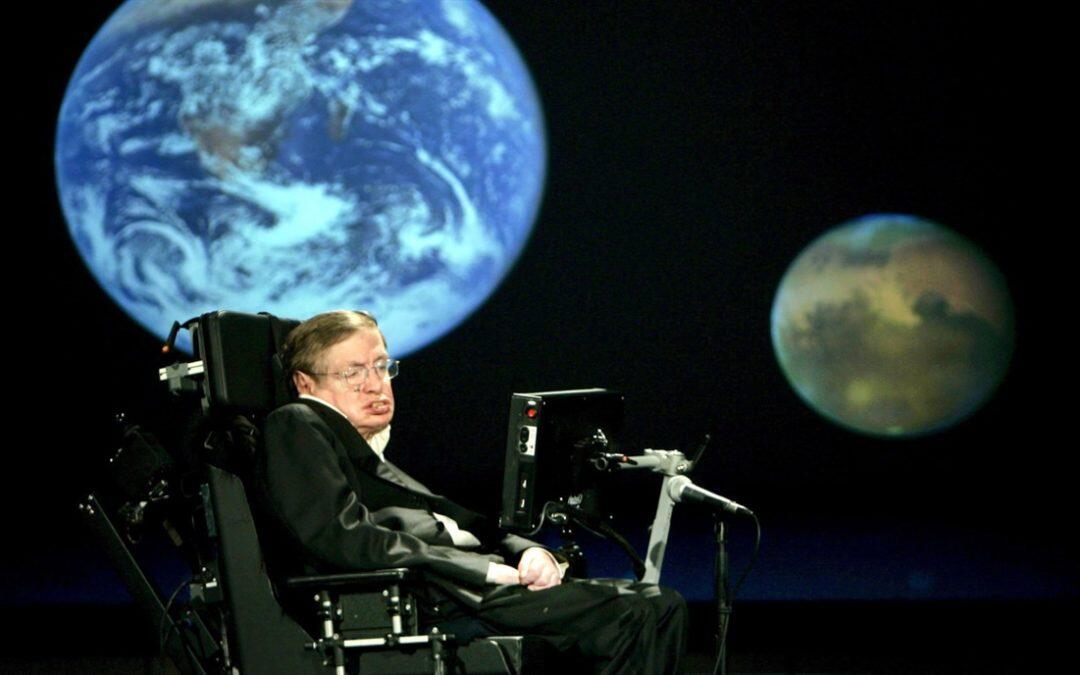Stephen Hawking, the British physicist and cosmologist who put the theories on the origin of the universe within reach of all, died this Wednesday at 76 years of age.
Hawking was one of the most popular scientists since Albert Einstein, not only for his discoveries and theories, but also for the circumstances of his life.
When he was 21 years old, he began to notice that his movements were getting clumsier and he was diagnosed with a type of Amyotrophic Lateral Sclerosis.
The doctors gave him between two and three years of life expectancy at the most, but the British challenged the forecasts and continued doing science for more than five decades.
Although the disease slowly paralyzed him, he was able to continue working on his theories and continue disseminating them, as well as participating in forums and expressing his opinion on the latest advances in science.
BBC Mundo reviews its most outstanding scientific contributions, which are mostly related to each other.
1. Black holes
Hawking devoted his whole life to researching the laws that govern the universe.
Many of his works revolve around black holes, so do not be surprised to see them appear also in the following points.
A black hole is a region of space with a quantity of concentrated mass so large that there is no possibility of a nearby object escaping its gravitational attraction.
The idea of black holes is much earlier than Hawking.
In fact, the first notions date back to the 18th century, but it was Einstein’s theory of general relativity, published in 1915, that made these spatial regions begin to be taken seriously.
In the 70s, Hawking took Einstein’s studies as a basis to obtain a description of the evolution of black holes from quantum physics.
“I think my biggest achievement will be that black holes are not completely black,” the physicist told the BBC last year.
“Quantum effects,” he continued, “make them glow like hot bodies with a temperature that is lower the bigger the black hole. This result was completely unexpected and showed that there is a deep relationship between gravity and thermodynamics. ”
He added: “I think this will be key to understanding how the paradoxes between quantum mechanics and general relativity can be solved.”
2. Hawking radiation
According to Hawking, the effects of quantum physics make black holes shine like hot bodies, hence they lose some of their blackness.
In 1976, following the enunciations of quantum physics, he concluded in his “radiation theory” that black holes are capable of emitting energy, losing matter and even disappearing.
Roland Pease, a BBC science journalist, explains: “A black hole would take a long time to evaporate in this way, but in its later years, Hawking said it would expire in a burst of energy equivalent to one million megatons of hydrogen bombs. ”
Therefore, when the Large Hadron Collider (LHC) was inaugurated in 2008 outside of Geneva, a high expectation was generated that the particle accelerator could create microscopic black holes and thus test Hawking’s ideas. .
If so, Pease claims that the Briton “certainly” would have received the Nobel Prize. But the LHC has not gotten such a test.
3. Confirmation of the Big Bang
Hawking’s work on black holes helped prove the idea that there was a Big Bang at the beginning of everything.
Although it had been developed in the 1940s, the Big Bang theory had not yet been accepted by all cosmologists.
However, in collaboration with the British mathematician Roger Penrose, Hawking realized that black holes were like the Big Bang inside out.
Therefore, according to the physicist, the mathematics he had used to describe the aforementioned black holes also served to describe the Big Bang.
As Pease explains, “while other researchers struggled to describe a brief moment in the life of a molecule using quantum laws, Hawking (along with physicist James Hartle) showed that it was possible to encapsulate the entire history of the entire universe into a single mathematical expression. ”
Although this expression is known as the Hartle-Hawking state, the British used to call it “wave function of the universe”.
Pease writes: “Because the expression is self-sufficient, it begins at a singularity at the beginning of time and closes with another at the end of time, and if necessary, history can bounce back and forth between these two extremes.” .
Uniting all these concepts, one of Hawking’s most daring assertions was to consider that Einstein’s general theory of relativity implied that space and time had a beginning in the Big Bang and have their end in black holes.
4. The theory of everything
It was perhaps his “theory of everything,” which suggests that the universe evolves according to well-defined laws, the one that attracted the most attention.
“This set of laws can give us the answers to questions like what was the origin of the universe,” Hawking said.
“Where is it going and will it have an end? And if so, how will it end? If we find the answers to these questions, then we will know the mind of God, “he promised.
5. Brief history of time
Despite the complexity of all these concepts, Hawking made a great effort to spread the cosmology in terms easy to understand for the general public.
His book “A Brief History of Time,” published in 1988, sold more than 10 million copies worldwide.
Even so, the physicist was aware that sales did not translate directly into complete readings and years later he published a shorter and easier to understand version.
The great talent of Hawking, which for many made him worthy of a Nobel Prize that did not come during his lifetime, was to have combined different but equally important fields of physics: gravitation, cosmology, quantum theory, thermodynamics and theory. of the information.
Source: BBC











